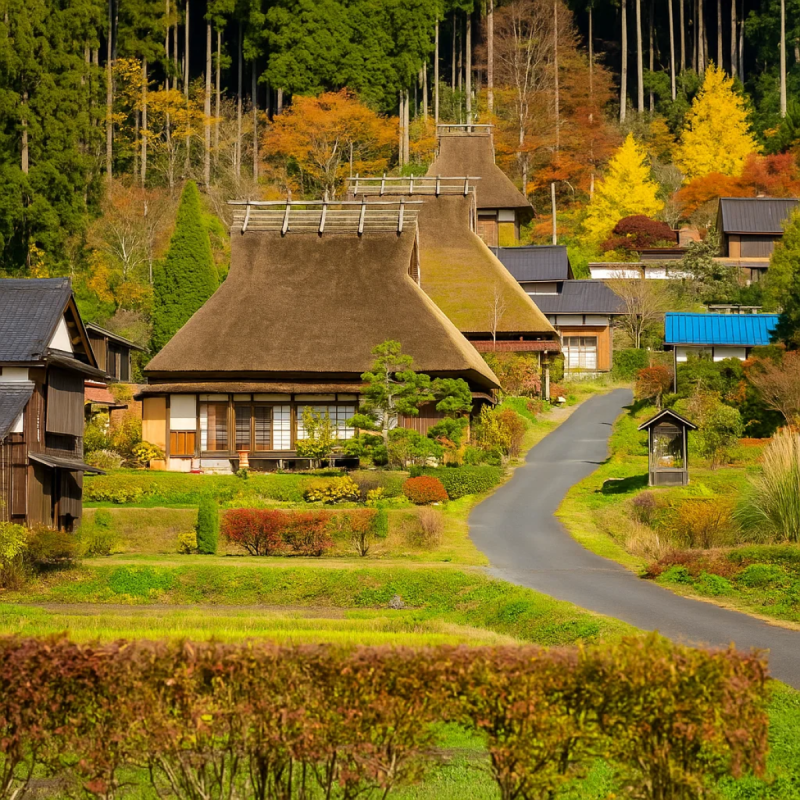
Miyama Travel Tips
Miyama (美山), located about 30 kilometers north of Kyoto, is a hidden gem known for its well-preserved rural scenery and traditional thatched-roof farmhouses called kayabuki. The centerpiece of the village is Kayabuki no Sato, where nearly 40 historic homes line quiet lanes, set against a backdrop of rolling mountains and rice paddies. Unlike many open-air museums, these houses are still inhabited, offering a rare glimpse into Japan's living folk heritage. Visitors can stroll through the village at their own pace, photograph the unique architecture, and learn about the craftsmanship of thatched roofing, which requires careful maintenance using locally harvested pampas grass. Cultural attractions include the Kayabuki no Sato Folk Museum, where tools and daily items from the Edo period are displayed, and the Little Indigo Museum, a functioning indigo dye studio housed in one of the farmhouses, offering insights into this centuries-old dyeing tradition.
For those seeking a more immersive experience, Miyama offers farmhouse stays where guests can spend the night in restored kominka homes that blend rustic charm with modern comforts such as heated floors, shared ofuro baths, and meals featuring locally sourced ingredients like mountain vegetables, handmade tofu, and sweetfish caught from the nearby Yura River. The surrounding countryside invites nature lovers to enjoy seasonal beauty year-round, from cherry blossoms in spring to vibrant foliage in autumn, and snow-covered roofs in winter. Outdoor activities include cycling along the riverside, fishing, or hiking in the nearby Ashiu Forest — one of Japan's most biodiverse natural forests, home to rare flora and fauna. As this protected area requires permits for entry, visitors are encouraged to join guided eco-tours arranged through the Miyama Nature and Culture Village Center, ensuring both safety and ecological preservation.
Getting around
In Miyama, getting around is easy and relaxing. Buses run about once an hour between Hiyoshi Station, the town center, and Kayabuki no Sato. A 1-day bus pass costs 1,200 yen, while a 2-day pass is 1,500 yen, offering unlimited rides on local Nantan buses. Just keep in mind that buses on other routes run less frequently, so it’s a good idea to check the schedule at the visitor center.
Another great way to explore is by renting an electric bicycle. You can rent one from the Miyama Visitor Center or Shizen Bunkamura Kajikaso for 2,000 yen (4 hours) or 3,000 yen (full day). Some guesthouses also offer bike rentals. If you prefer more flexibility, driving is the easiest option, though you’ll need to rent a car in places like Kyoto, Kameoka, or Fukuchiyama, as there are no rental offices in Miyama itself.
